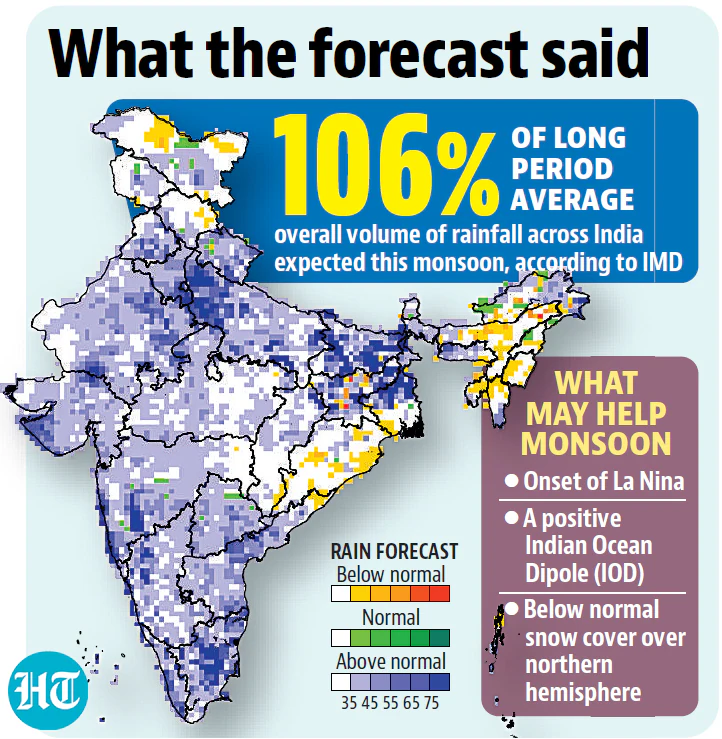This year’s monsoon rainfall is expected to be 6% higher than the long period average (LPA) of 870 mm, according to the India Meteorological Department (IMD). According to private forecaster Skymet, the monsoon will be typical. Rainfall during a typical monsoon ranges from 96% to 104% of the LPA from June to September.
While the IMD and Skymet agree on the overall impact, they disagree on the weights assigned to the many components influencing the monsoon. Despite the IMD’s prediction of a normal monsoon, the actual monsoon was below average. That was primarily due to the El Nino factor linked to the Central Pacific’s sea surface warming.

Source: Hindustan Times
While Skymet anticipates the El Nino’s “remnant effects” to last, the IMD anticipates it to weaken during the early monsoon. The nation, which depends on the monsoon in many ways, needs it to be regular. Even though it currently only makes up 17% of the country’s GDP, the monsoon is very important to it. The country’s cultivable land is largely dependent on the monsoon and is not irrigated.
Approximately 60% of the kharif crops are dependent on the monsoon.A large portion of the population makes their living from agriculture. A healthy monsoon increases demand and revenue in rural areas, which should boost the overall economy. The IMD forecast merely provides an indication of the monsoon’s likely general pattern; the agency is anticipated to revise it next month to include information on the rains’ precise location and timing. Governments, farmers, and other stakeholders will have greater guidance from this.
Source: Business Standard
Current trends suggest that while the national average is probably going to be above normal, there may be certain areas of the country where the rainfall is below average.A significant portion of the optimism surrounding the monsoon stems from the potential for La Niña conditions, linked to the cooling of Pacific Ocean waters, to emerge in August and support the monsoon.
According to the IMD, additional elements such as favourable circumstances for the Indian Ocean Dipole, a phenomena associated with the ocean’s surface temperatures, and less snowfall in the northern hemisphere will also contribute to the monsoon’s strengthening during the second half of the season. While state and federal governments are currently preoccupied with the Lok Sabha elections, they also need to begin preparing for the monsoon since early in the season there is a chance it won’t arrive as expected.
What do you think about this? Comment below.

